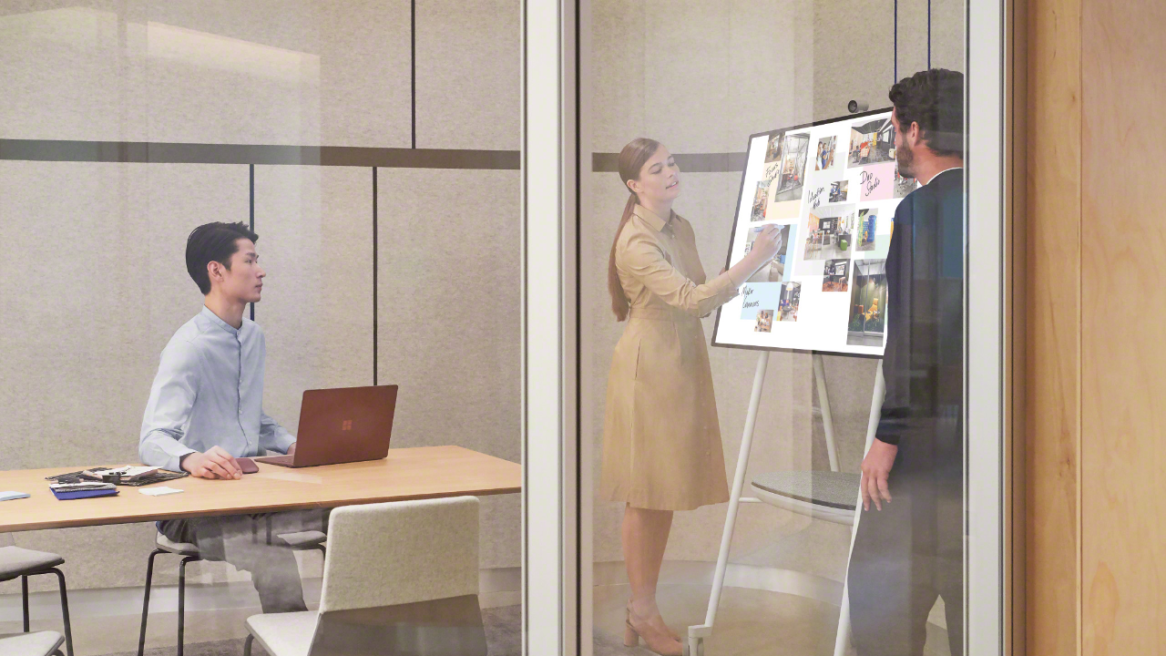What Workers Told Us About Collaboration
Global study reveals universal conditions needed for successful collaboration.
Collaboration is important to my work because…
“Problem solving is almost impossible without teamwork.”
“Everyone is in sync and understands what needs to be done.”
“Trust is built up.”
No matter where you are in the world, new research tells us the conditions needed for successful collaboration are universal. The Steelcase Active Collaboration Study 2019* spoke to more than 3,000 executives, managers and individual contributors in different size organizations in Australia, France, Germany, Japan, the U.S. and the U.K. Active collaboration is a new concept inspired by Steelcase research from the classroom—discouraging passive activity for more active, engaged behaviors.
It was nearly unanimous that teamwork is crucial (97%) and helps generate better ideas (93%). The global findings revealed barriers workers face to successful collaboration include lack of access to the right people, lack of access to information, outdated technology and rampant distractions.
The research also identified a significant gap between those who wanted to move while collaborating (72%) and those who could (53%).
Surprisingly, there weren’t any significant differences in the study based on age, and a deeper look into the results allows us to see what organizations should consider when they are thinking about how to increase collaboration.
Collaboration at Its Best
Steelcase asked, “When collaboration is at its best, what factors are present?” Here’s what people said:
64% – The team listened to each other
- Australian and U.S. employees rank this as especially important (70%)
- Individual contributors rank this as very important (67%)
- People who worked at the largest organizations rank this as very important (69%)
60% – The team had a shared purpose
- Australian employees rank this as especially important (66%)
- Individual contributors, and managers and directors both rank this as very important (61%)
- The larger the organization, the more important this is considered (63% for 10,000+ employees)
52% – The right people were in the room
- Australian employees rank this as especially important (60%)
- Individual contributors, and managers and directors both rank this as very important (52%)
- The larger the organization, the more important this is considered (54% for 5,000+ employees)
51% – Team members were able to build on each other’s work
- Australian (61%) and U.S. employees (60%) rank this as especially important
- Executives (54%) and individual contributors (53%) find this very important
- Larger organizations consider this especially important (57% for 5,001-10,000 people, 56% for 10,000+ people)
49% – Had access to all needed information
- U.S. employees see this as especially important (56%)
- Executives (48%) and managers and directors (47%) find this especially important
- People working in mid-size organizations find this especially important (50% for 5,001 10,000 people)
44% – The team was able to focus without distraction
- Japanese employees rank this lower than all other countries (25%)
- If Japan is excluded, the global average rises to 48% bolstered by Australia which finds this especially important (55%)
- Executives find this more important than the other two employee groups surveyed (52%)
43% – Team could display relevant information/previous work
- Japanese employees rank this lower than all other countries (29%)
- If Japan is excluded, the global average rises to 46% bolstered by France (51%)
- Executives find this more important than the other two employee groups surveyed (47%)
- Both the smallest (45%) and largest (44%) organizations surveyed find this important
Active collaboration encourages people at work to become more physically, mentally and emotionally engaged in idea generation. Considering the needs people have for successful collaboration and benefits identified with active versus passive collaboration, the Steelcase Applications Design Studio offers these principles to create spaces for active collaboration:
Encourage movement – Use light-scale furniture to allow teams to create a space that fits their needs and provide seating that encourages perching or standing postures.
Encourage equal participation – Provide co-creation tools, such as large-scale collaboration devices, that make ideas visible and allow everyone to contribute to and interact with content.
Create an ambient connection to the space – Build a welcoming environment and design spaces that encourage people to experiment with the help of integrated technology.
To learn more about what the Steelcase Active Collaboration Study 2019 found about barriers preventing successful collaboration and to delve deeper into the design principles read Fuel Better Ideas: Get Active.
*Participants in the survey included employees from Australia, France, Germany, Japan, the U.K. and the U.S., executives and c-suite leaders, managers or directors and individual contributors, and those who worked at companies with 501-1,000, 1,001-5,000, 5,001-10,000 and more than 10,000 people.


